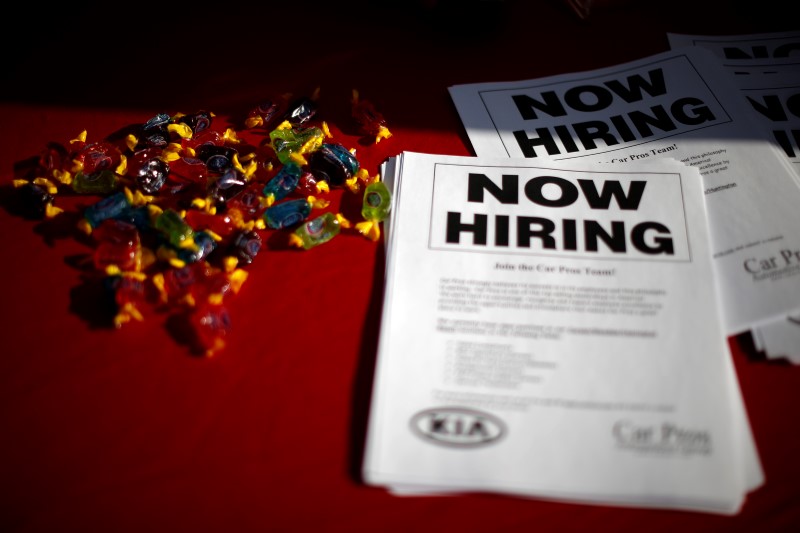By Lucia Mutikani
WASHINGTON (Reuters) - U.S. job openings rose in November and employers appeared to have trouble finding qualified workers, a trend that could trigger a pick-up in wage growth this year.
Job openings, a measure of labor demand, increased 82,000 to a seasonally adjusted 5.43 million, the Labor Department said in its monthly Job Openings and Labor Turnover Survey on Tuesday.
The rise lifted the jobs openings rate to 3.7 percent from 3.6 percent in October. Hiring rose to 5.20 million from 5.17 million the prior month, continuing to lag job openings. The hiring rate was unchanged at 3.6 percent.
Job openings are high relative to the unemployment rate, which is currently at a 7-1/2 year low of 5 percent.
"We interpret this as a sign of a mismatch between the needs of employers and the skills of job seekers," said John Ryding, chief economist at RDQ Economics in New York. "Since firms appear unable to fill job openings with unemployed labor resources, we expect there will be competition for already-employed workers, which should lead to stronger wage growth."
Even as the labor market tightens, wage growth has been frustratingly slow. Average hourly earnings have failed to break above 2.5 percent on a year-over-year basis. Economists say a growth rate of between 3 and 3.5 percent in wages is needed to bring inflation near the Federal Reserve's 2 percent target.
The so-called JOLTS report is among the data watched by Fed officials to get a pulse on both the labor market and inflation.
The Fed last month raised its benchmark overnight interest rate by 25 basis points to between 0.25 and 0.50 percent, in a vote of confidence in the economy. Further hikes will likely depend on the inflation outlook and financial market conditions, economists say.
Tightening labor market conditions were also corroborated by the National Federation of Independent Business survey on Tuesday, which showed the share of small businesses reporting they could not find qualified workers in December was the highest in six years.
According to the NFIB, finding qualified workers now ranks as one of the main challenges for small businesses. The share of businesses reporting wage increases remained relatively high in December.
"The high proportion of firms with hard-to-fill positions is a sign that the labor market has tightened up to the point that wages are being pulled higher," said Mark Vitner, a senior economist at Wells Fargo (N:WFC) Securities in New York.
But for now, wage growth will likely remain gradual. The JOLTS report showed the quit rate, which the Fed looks at as a measure of confidence in the jobs market, was unchanged at 2.0 percent in November. The number of unemployed job seekers per open job fell to a ratio of 1.46 from 1.48 in October.
There were big increases in job openings in leisure and hospitality, and construction sectors. Job openings fell in professional and business services, and trade, transportation, and utilities sectors.

"The JOLTS report is consistent with our view that the labor market will continue to improve, but that we will see some moderation in job growth," said Daniel Silver, an economist at JPMorgan (N:JPM) in New York.